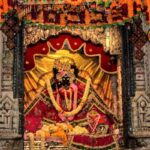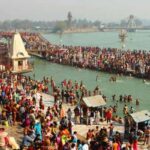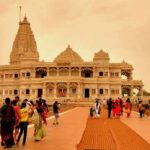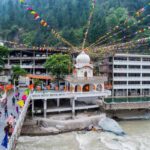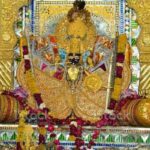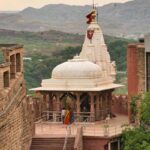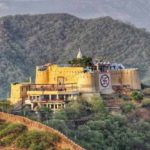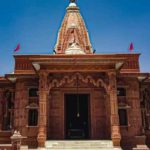Mahashivratri Festival, one of the most significant Hindu festivals, celebrates the marriage of Lord Shiva to Goddess Parvati. Observed annually in the lunar month of Phalguna or Maagha (February or March), Mahashivratri holds immense spiritual significance for devotees worldwide. It is believed that on this auspicious night, Lord Shiva performs the cosmic dance of creation, preservation, and destruction.
Devotees fast, meditate, and offer prayers to Lord Shiva, seeking his blessings for strength, prosperity, and enlightenment. Temples across India are adorned with flowers and illuminated with lamps as devotees engage in devotional singing and chanting. The festival is also marked by vibrant processions, especially in regions like Varanasi and Haridwar, where devotees take holy dips in the Ganges River.
Mahashivratri is not just a religious event but also a cultural extravaganza, showcasing various forms of classical and folk dance, music, and theatrical performances. It symbolizes the victory of light over darkness and the triumph of good over evil, inspiring devotees to embrace spirituality and righteousness in their lives.
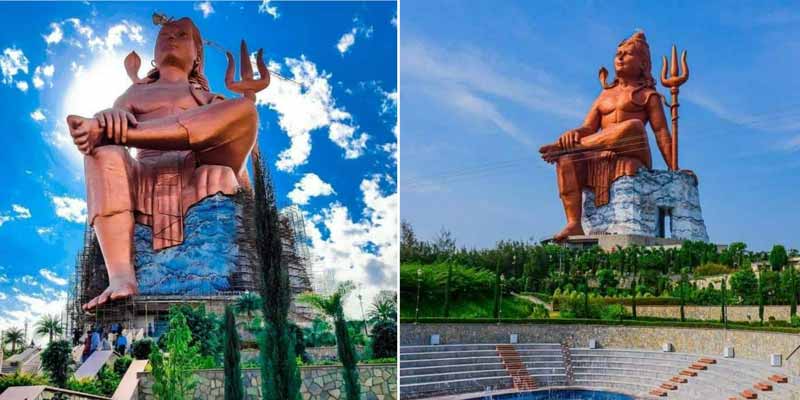
Mahashivratri History
Mahashivratri, also known as the “Great Night of Shiva,” has a rich historical and mythological significance in Hindu culture. The festival commemorates several legendary events associated with Lord Shiva, one of the principal deities of Hinduism.
One popular legend behind Mahashivratri revolves around the churning of the cosmic ocean (Samudra Manthan) by the gods (Devas) and demons (Asuras) to obtain the nectar of immortality (Amrit). During this churning, a deadly poison (Halahala) emerged, threatening to destroy the universe. To save the world, Lord Shiva drank the poison, but instead of swallowing it, he held it in his throat, turning his throat blue and earning him the name “Neelkanth” (the blue-throated one). Mahashivratri Festival celebrates Shiva’s selfless act and his role in preserving the universe.
Another legend associated with Mahashivratri is the marriage of Lord Shiva to Goddess Parvati. It is believed that on this auspicious day, Shiva and Parvati were united in divine matrimony. Devotees observe Mahashivratri as a celebration of their sacred union, seeking blessings for marital harmony and prosperity.
Mahashivratri also marks the night when Lord Shiva performed the Tandava, the cosmic dance of creation, preservation, and destruction. It symbolizes the rhythmic cycle of life, death, and rebirth.
Overall, Mahashivratri Festival holds profound spiritual and cultural significance in Hindu tradition, symbolizing devotion, purification, and the triumph of righteousness over evil. It is a time for devotees to reflect on Lord Shiva’s teachings, seek his blessings, and engage in spiritual practices to attain enlightenment and inner peace.
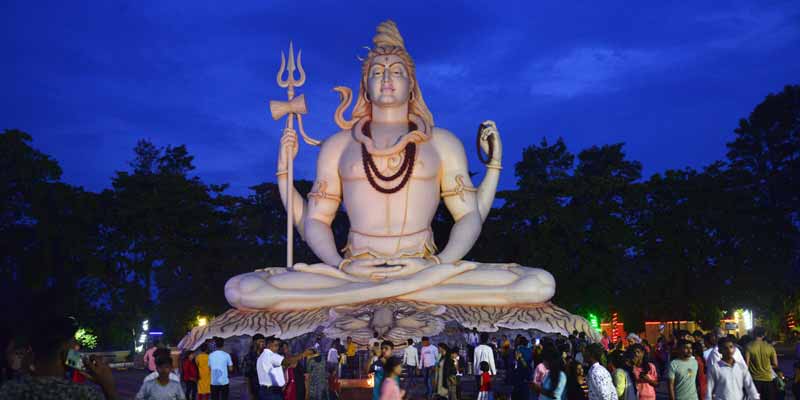
Why Mahashivratri Is Celebrated?
Mahashivratri is celebrated for several reasons, each rooted in Hindu mythology and tradition. Here are some of the main reasons why Mahashivratri is observed:
Marriage of Lord Shiva and Goddess Parvati: Mahashivratri commemorates the divine marriage of Lord Shiva, the god of destruction, with Goddess Parvati, the goddess of fertility, love, and devotion. This union symbolizes the inseparable bond between the male and female energies of the universe and signifies the importance of marital harmony and devotion in Hindu culture.
The Night of Lord Shiva’s Tandava: According to Hindu mythology, Mahashivratri is believed to be the night when Lord Shiva performed the Tandava, the cosmic dance of creation, preservation, and destruction. Devotees celebrate this event as a symbol of the rhythmic cycle of life, death, and rebirth, highlighting the cosmic order and the interconnectedness of all existence.
The Consumption of Poison: Another significant myth associated with Mahashivratri is the story of Lord Shiva drinking the deadly poison (Halahala) that emerged during the churning of the cosmic ocean (Samudra Manthan) by the gods and demons. Shiva’s act of consuming the poison to save the universe emphasizes his selflessness, compassion, and willingness to bear hardships for the greater good.
Spiritual Significance: Mahashivratri is considered an auspicious day for spiritual practices such as fasting, meditation, and prayers dedicated to Lord Shiva. Devotees believe that observing Mahashivratri with devotion and austerity can lead to spiritual upliftment, inner purification, and the attainment of blessings and divine grace.
Overall, Mahashivratri Festival is celebrated to honor Lord Shiva, seek his blessings, and immerse oneself in devotion, spirituality, and self-transformation. It is a time for introspection, purification, and reconnection with the divine, fostering a sense of unity, harmony, and reverence for the cosmic forces that govern the universe.
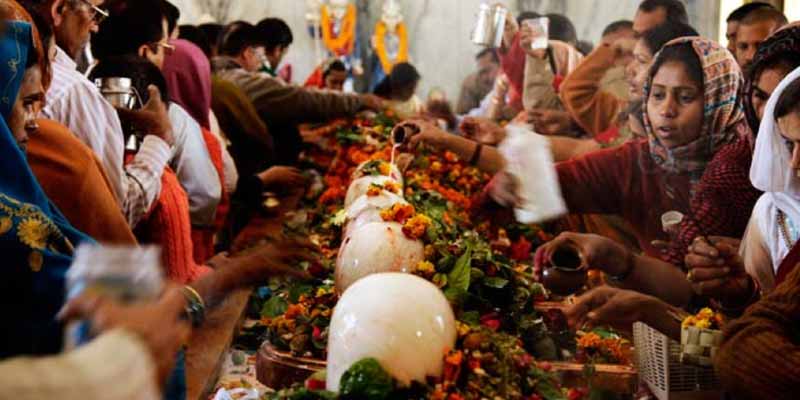
How Is Mahashivratri Celebrated?
Mahashivratri is celebrated with great fervor and devotion by Hindus across the world. The celebrations vary in different regions, but there are common practices associated with this auspicious day:
Fasting (Vrat): Devotees observe a day-long fast or partial fast as a mark of purification. Some may abstain from food and consume only fruits and milk, while others refrain from consuming any food or water.
Night Vigil (Jaagran): The night of Mahashivratri is considered particularly potent, and devotees often stay awake through the night in prayer, singing hymns, and chanting the name of Lord Shiva. Temples resonate with the sound of bells and the chanting of “Om Namah Shivaya.”
Visit to Shiva Temples: Devotees visit Shiva temples to offer prayers and perform special rituals. They bathe the Shiva Linga (an iconic representation of Lord Shiva) with water, milk, honey, and other sacred substances, symbolizing purification and devotion.
Lighting Oil Lamps (Diya): Lighting oil lamps and incense is a common practice during Mahashivratri. It symbolizes dispelling darkness and offering one’s inner light to Lord Shiva.
Abhishek (Ritual Bath): The Shiva Linga is bathed with various liquids, including milk, yogurt, honey, ghee, and water, in a ritual called Abhishek. Each substance represents different auspicious qualities and is believed to purify the devotee’s soul.
Wearing Rudraksha Beads: Devotees often wear Rudraksha beads, believed to be sacred to Lord Shiva, as part of their attire during Mahashivratri.
Hymns and Bhajans: Devotional songs and hymns dedicated to Lord Shiva, known as bhajans, are sung during the celebration. These songs express love, devotion, and the glory of Lord Shiva.
Meditation and Yoga: Some devotees engage in meditation and yoga practices on Mahashivratri, seeking spiritual growth and inner peace.
Cultural Programs: In various regions, cultural programs such as classical dance performances, music concerts, and dramas depicting Shiva’s divine stories are organized to celebrate the occasion.
Community Celebrations: Mahashivratri is often a time for community bonding. People come together to organize processions, community meals (prasad), and various social and cultural events.
Overall, Mahashivratri Festival is a day of deep spiritual reflection, devotion, and celebration, where devotees express their love and reverence for Lord Shiva through various rituals and practices.

